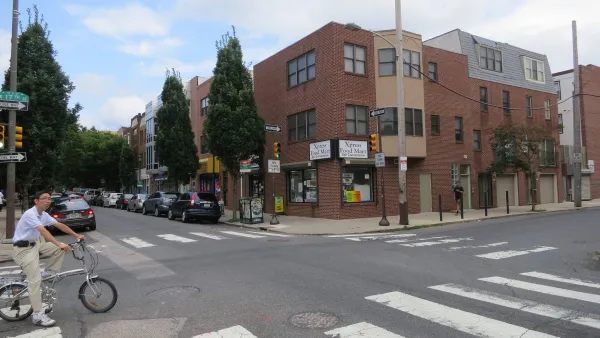The Editorial Board of the New York Times offers perhaps the highest profile support to date for overthrowing the status quo of slow growth and development opposition.

An editorial by the New York Times Editorial Board (noted to represent the opinions of the board, its editor, and the publisher), weighs in on the great debate of the age in planning: how to solve the ongoing housing affordability crisis gripping cities all over the United States.
The editorial says government is the problem for the lack of affordable housing around the country, creating the shortage by preventing construction. The editorial also debunks the notion of building boom in many of the most expensive cities in the country.
Don’t be misled by the construction cranes that punctuate city skylines. The number of housing units completed in the United States last year, adjusted for the size of the population, was lower than in any year between 1968 and 2008. And the problem is most acute in major urban areas along the east and west coasts. Housing prices, and homelessness, are rising across the country because there is not enough housing.
Given this framing, it shouldn't be surprising that the editorial expresses support for the idea of building more housing to help alleviate pressure on the housing market. The editorial says new development in dense urban areas could also create new jobs, reduce carbon emissions, and address inequality.
As its example of a new way of planning things, the editorial showcases Minneapolis, would recently adopted the Minneapolis 2040 Comprehensive Plan, which sets the city on a course to eventually end single-family zoning.
FULL STORY: Americans Need More Neighbors

National Parks Layoffs Will Cause Communities to Lose Billions
Thousands of essential park workers were laid off this week, just before the busy spring break season.

Retro-silient?: America’s First “Eco-burb,” The Woodlands Turns 50
A master-planned community north of Houston offers lessons on green infrastructure and resilient design, but falls short of its founder’s lofty affordability and walkability goals.

Delivering for America Plan Will Downgrade Mail Service in at Least 49.5 Percent of Zip Codes
Republican and Democrat lawmakers criticize the plan for its disproportionate negative impact on rural communities.

Test News Post 1
This is a summary

Test News Headline 46
Test for the image on the front page.

Balancing Bombs and Butterflies: How the National Guard Protects a Rare Species
The National Guard at Fort Indiantown Gap uses GIS technology and land management strategies to balance military training with conservation efforts, ensuring the survival of the rare eastern regal fritillary butterfly.
Urban Design for Planners 1: Software Tools
This six-course series explores essential urban design concepts using open source software and equips planners with the tools they need to participate fully in the urban design process.
Planning for Universal Design
Learn the tools for implementing Universal Design in planning regulations.
EMC Planning Group, Inc.
Planetizen
Planetizen
Mpact (formerly Rail~Volution)
Great Falls Development Authority, Inc.
HUDs Office of Policy Development and Research
NYU Wagner Graduate School of Public Service





























